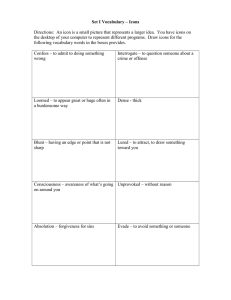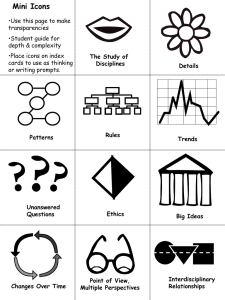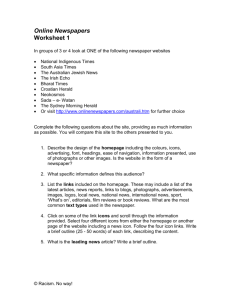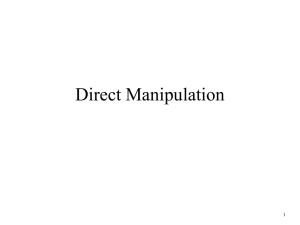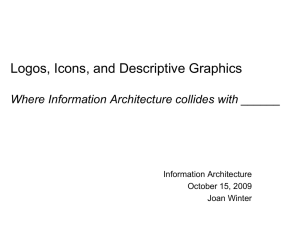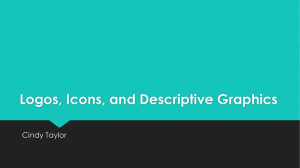Logos, Icons and Descriptive Graphics Jessica Kubik 385E Information Architecture and Design I
advertisement
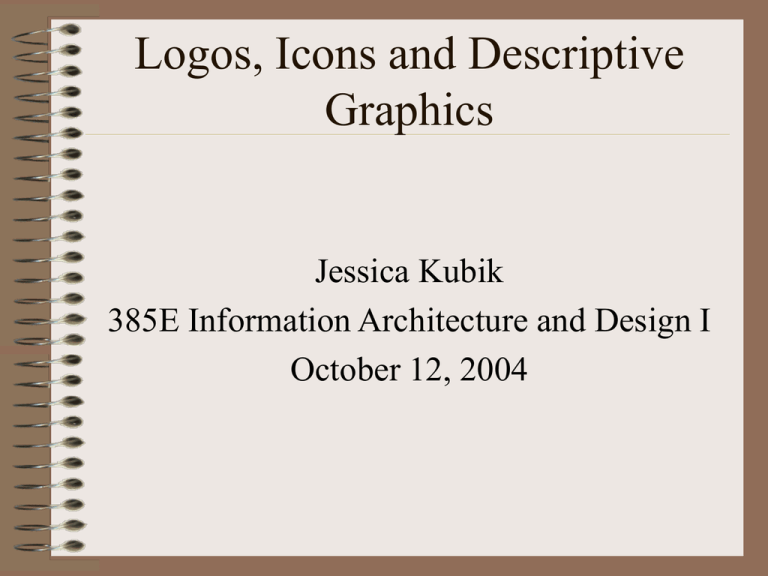
Logos, Icons and Descriptive Graphics Jessica Kubik 385E Information Architecture and Design I October 12, 2004 A Brief History • Symbols are the most enduring form of written communication, whether phonetic or ideographic. • They are part of what is known as ‘Iconography. • Iconography goes back to the Stone Ages, as early as 35,000 BC. Logos • A combination of characters and/or graphics creating a design used to identify a company. • Used as identifiers, whether it is inside/outside of a building, in ads, or more recently found on the web. Logo implications • A logo signifies the image of a company. • Often placed in the upper left-hand corner of a web page. • Usually a link. Examples of Logos Icons • Icon comes from the Greek work Eikon, which means ‘an image’. • Communicate across languages and cultures. Two categories of Icons • Symbols associated with objects, where the visual image is preserved. • Symbols which once had visual associations that have since vanished and now represent syllables or ideas. Icon implementations • They can successfully compliment textual labels. • A familiar icon is processed more quickly and easily than a text link. Disadvantages of Symbols and Icons • Can be more limited than text. • Sometimes can be ambiguous. • Avoid using icons for complex ideas. Ambiguous icons Descriptive Graphics • Maps • Buttons • Thumbnails • Browser icons Maps combine use of logos and icons Interactive Maps Conclusion • In conclusion, logos, icons and descriptive graphics can be very helpful in conveying the message you want to get out. • Avoid ambiguous symbols and complex ideas. • Take advantage of using them in design— because they are graphic, they can make a website more appealing.
